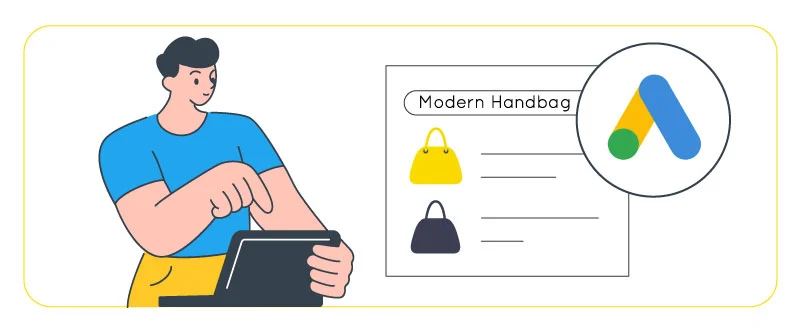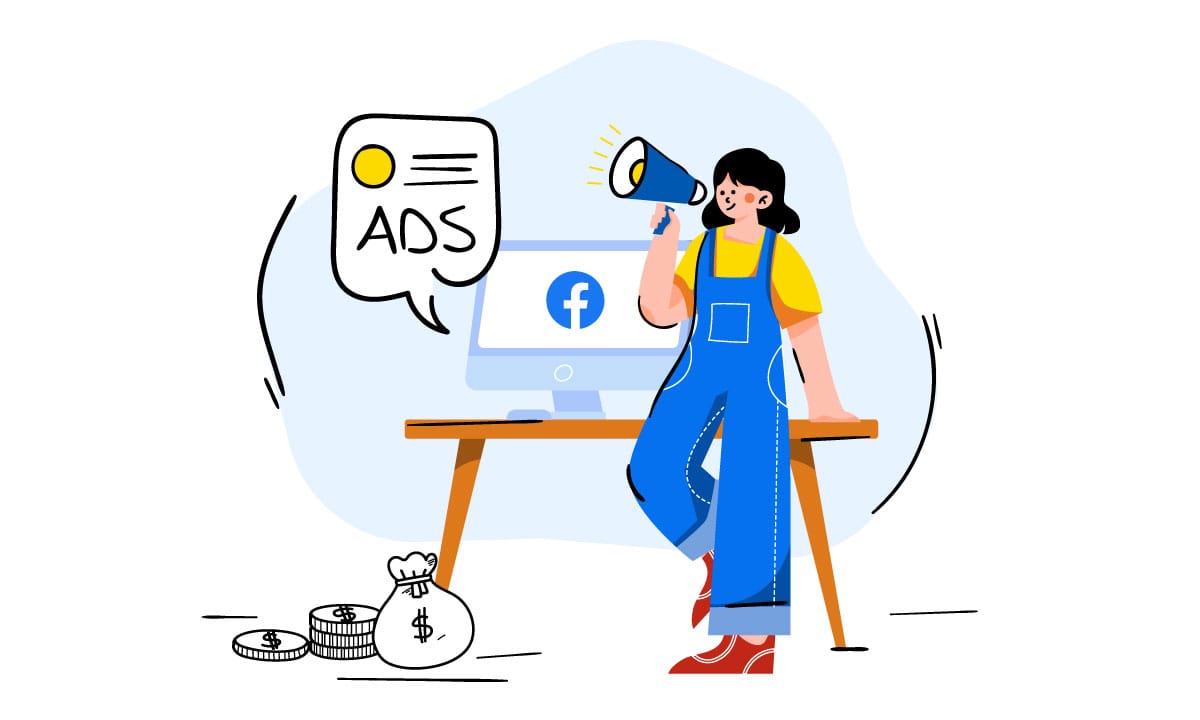Advertising plays a critical role in the success of a dropshipping business. With the rise of e-commerce, competition among online stores, affiliate marketers, and dropshippers is at an all-time high, making it crucial to effectively reach potential customers and stand out in the crowded marketplace. When it comes to advertising, there are many options available to dropshipping businesses. However, two of the most popular platforms are Google Ads and Facebook Ads. Both offer a myriad of targeting options, ad formats, and measurement tools, making it easier than ever to connect with customers and drive sales.

We’re going to do a full Facebook Ads vs Google Ads and for dropshipping comparison, exploring the pros and cons of each platform, and discussing the best practices for each. Whether you’re just starting out with dropshipping and looking for the best place to find customers, or looking to expand your current dropshipping business, this article will provide you with the information and insights you need to succeed.
What is dropshipping?
Dropshipping is a retail fulfillment method where a store doesn’t keep the products it sells in stock. Instead, when a store sells a product, it purchases the item from a third-party supplier that ships it directly to the customer. This allows businesses to offer a wide range of products without having to manage inventory, storage, or shipping.
The benefits of dropshipping include lower start-up costs, minimal risk, and the ability to offer a vast selection of products. However, one of the biggest challenges faced by dropshipping businesses is attracting customers and building brand recognition. This is where advertising comes into play.

Advertising is critical for the success of dropshipping businesses. It provides an effective way for these businesses to reach and engage with potential customers, generate leads, and increase sales. There are several types of advertising available for dropshipping businesses, including search engine advertising, display advertising, and social media advertising.
The objectives of advertising for dropshipping businesses are to increase visibility, build brand recognition, drive traffic to their website, and generate leads and sales. To achieve these objectives, businesses need to have a clear understanding of their target audience and choose the right advertising platform and strategy to reach them. Two of the most effective options currently available to dropshipper are Google Ads and Facebook Ads, each of which has its own set of features, advantages, and limitations. Let’s dive into them to have a clear understanding of how each one could benefit you as a dropshipper.
Maximizing your dropshipping potential with Google Ads and Facebook Ads
Google Ads is a powerful advertising platform that allows businesses to reach a large audience through various channels, including search results, display ads, video ads, and more. With Google Ads, you can create targeted campaigns that reach specific demographics, such as people searching for keywords related to your products or services. Google Ads also provides detailed tracking and reporting, so you can see the performance of your campaigns and make data-driven decisions to improve their effectiveness.

Facebook Ads, on the other hand, is a social media advertising platform that allows businesses to reach a highly engaged audience. Facebook has over 2.8 billion active users, making it a large and diverse audience to target. With Facebook Ads, you can target specific demographics, such as people who live in a certain location, are interested in specific topics, or have recently interacted with your business. Facebook Ads also offers cost-effective advertising options, as well as dynamic ad options, such as carousel ads and collection ads, that allow you to showcase multiple products in a single ad.
Both Google Ads and Facebook Ads have their own unique features and benefits, but they also have similarities, such as advanced targeting options, that make them both valuable tools for dropshipping businesses looking to reach a specific audience. By understanding the key features of each platform, you can make informed decisions about which one is best for your business.
Google Ads for dropshipping
Google Ads is a powerful advertising platform that can help dropshipping businesses reach a large audience and drive sales. Some of the key advantages of using Google Ads for dropshipping include:
- Large audience reach: With Google Ads, you can reach a large audience through various channels, including search results, display ads, video ads, and more. This means that you can reach potential customers who are actively searching for products like yours.
- Advanced targeting options: Google Ads provides advanced targeting options, such as location targeting, language targeting, and device targeting, that allow you to further narrow down your audience. This helps you reach the most relevant and interested audience for your products. You can target specific demographics, such as people searching for keywords related to your products or services. This allows you to reach your ideal audience and increase the likelihood of making a sale.

- Detailed tracking and reporting: Google Ads provides detailed tracking and reporting, so you can see the performance of your campaigns and make data-driven decisions to improve their effectiveness. This helps you optimize your campaigns for maximum results and maximize your return on investment (ROI).
By taking advantage of these key features, dropshipping businesses can leverage the power of Google Ads to reach a large audience and drive sales. With its large audience reach, ability to target specific demographics, advanced targeting options, and detailed tracking and reporting, Google Ads is a valuable tool for dropshipping businesses looking to grow their online presence.
Facebook Ads for dropshipping
Facebook Ads can help dropshipping businesses reach a highly engaged audience and drive sales. Some of the key advantages of using Facebook Ads for dropshipping include:
- Ability to target a highly engaged audience: Facebook has over 2.8 billion active users, making it a large and diverse audience to target. In addition to hosting a gigantic number of users on its platforms (including Instagram), Facebook has also categorized them on a hyper granular level, giving you much room to narrow down your audience. This helps you reach a highly engaged audience who is likely to be interested in your products. Facebook Ads provides advanced targeting options, such as interest targeting, behavior targeting, and custom audience targeting, that allow you to further narrow down your audience. This helps you reach the most relevant and interested audience for your products.

- Cost-effective advertising options: Facebook Ads offers cost-effective advertising options, such as sponsored posts, that allow you to reach your audience without breaking the bank. This makes it an accessible option for dropshipping businesses of all sizes.
- Dynamic ad options: Facebook Ads offers dynamic ad options, such as carousel ads and collection ads, that allow you to showcase multiple products in a single ad. This helps you tell a compelling story about your products and increase the likelihood of making a sale.
With its ability to target a highly engaged audience, advanced targeting options, cost-effective advertising options, and dynamic ad options, Facebook Ads is a valuable tool for dropshipping businesses looking to grow their online presence.
Which one is more effective for dropshipping?
When it comes to choosing between Facebook Ads vs Google Ads for your dropshipping business, both Google Ads and Facebook Ads have their own unique strengths and weaknesses. Consider the following factors when choosing between these two platforms.
Who is your target audience?
Consider the type of audience you want to reach and what platform is most likely to reach that audience. For example, if you want to reach people who are actively searching for products like yours, Google Ads may be a better option. If you want to reach a highly engaged audience who is interested in your products, Facebook Ads may be a better option.
How much is your budget?
Consider your advertising budget and what platform offers the most cost-effective advertising options. Google Ads can be more expensive, but it also offers more detailed tracking and reporting, which can help you optimize your campaigns for maximum results. Facebook Ads is typically more cost-effective, but it may not have the same level of detailed tracking and reporting as Google Ads.
What are your goals with advertising?
Consider your advertising goals and what platform can best help you achieve those goals. For example, if you want to reach a large audience and drive sales, both Google Ads and Facebook Ads can be effective options. If you want to increase brand awareness, Facebook Ads may be a better option.
Ultimately, the right platform for your dropshipping business will depend on your specific needs and goals. By considering these key factors and understanding the strengths and weaknesses of each platform, you can make an informed decision about which one is best for your business.
Conclusion
In the world of online advertising, both Google Ads and Facebook Ads are powerful tools that can help dropshipping businesses reach a large and engaged audience. While each platform has its own unique strengths and weaknesses, both offer cost-effective advertising options, advanced targeting options, and dynamic ad options that can help you drive sales and grow your business. When choosing the right platform for your dropshipping business, it’s important to consider your target audience, budget, and advertising goals. By understanding the key features and advantages of each platform and making an informed decision, you can ensure that your advertising efforts are successful and help you reach your business goals.
FAQs
What is the difference between Google Ads and Facebook Ads for dropshipping?
Google Ads is a pay-per-click advertising platform that focuses on search engine advertising. It allows businesses to place ads on Google’s search engine results pages, which are shown to users based on their search queries. On the other hand, Facebook Ads is a social media advertising platform that allows businesses to place ads in users’ Facebook newsfeeds and other areas on the platform. Facebook Ads targets users based on their interests, behaviors, and other data gathered by Facebook.
Which platform is better for reaching a highly engaged audience, Google Ads or Facebook Ads?
Facebook Ads is often better for reaching a highly engaged audience. This is because the platform gathers a wealth of information about users, including their interests, behaviors, and engagement with content, which allows for more targeted advertising. Facebook Ads also allows businesses to create dynamic and visually appealing ads that can help capture the attention of users and drive engagement.
Which platform is more cost-effective for dropshipping businesses, Google Ads or Facebook Ads?
It depends on the specific needs and goals of the dropshipping business. Google Ads can be more expensive, but it also offers more detailed tracking and reporting, which can help businesses optimize their campaigns for maximum results. Facebook Ads is typically more cost-effective, but it may not have the same level of detailed tracking and reporting as Google Ads.
What should I consider when choosing between Google Ads and Facebook Ads for my dropshipping business?
When choosing between Google Ads and Facebook Ads for a dropshipping business, it’s important to consider the target audience, budget, and advertising goals. Other factors to consider include the types of products being sold, the competition for advertising space on each platform, and the level of tracking and reporting offered by each platform. By carefully considering these factors, businesses can make an informed decision and choose the platform that best fits their needs and goals







 Facebook Ads Spy Tool
Facebook Ads Spy Tool TikTok Ads Spy Tool
TikTok Ads Spy Tool